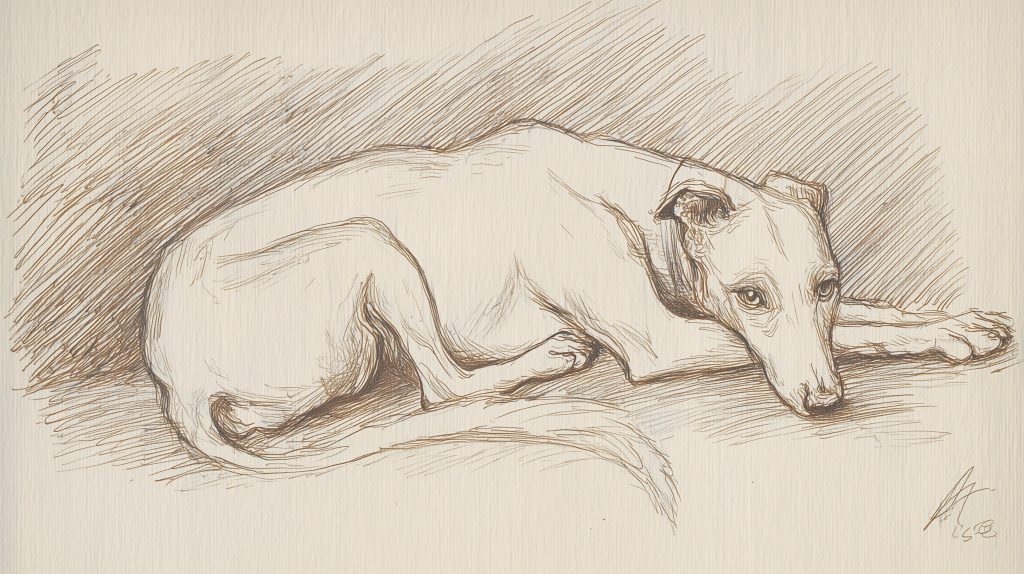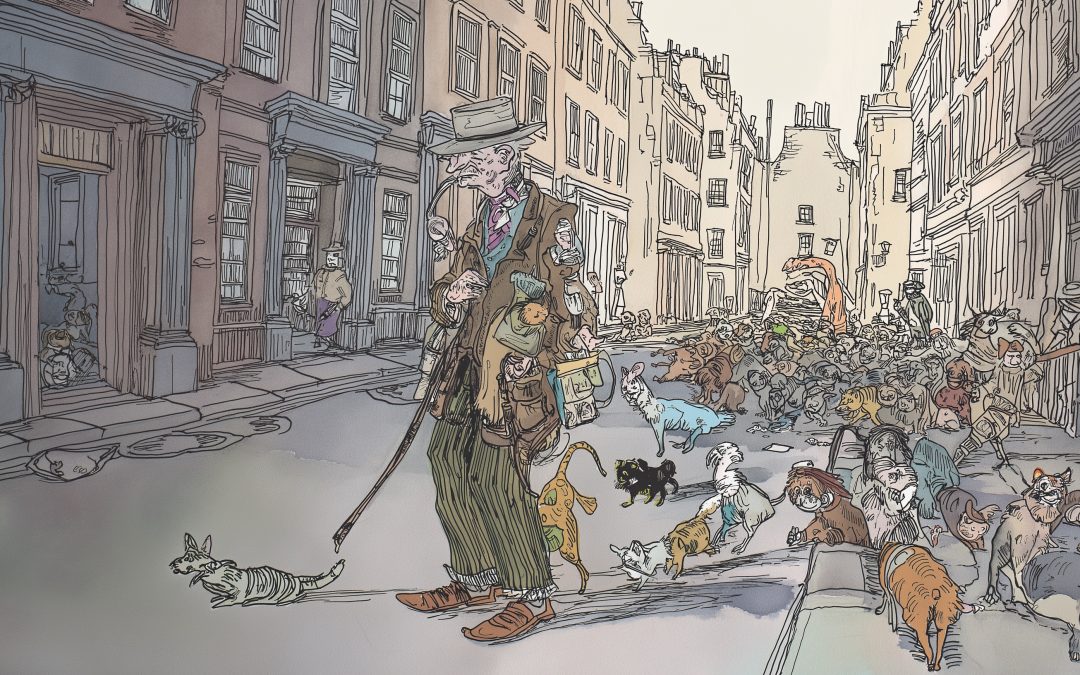Caterpillar Flood trades tiny portraits for meat, feeding the strays who follow him through Guardian City’s alleys like a living ribbon.
In a city where everyone moves at pace, chasing the next elusive guinea, there is something stubbornly unaccountable about the dishevelled meanderer Cillian “Caterpillar” Flood.
His business – if that’s the word – is conducted entirely at walking pace He operates without premises, prices, or profit. He trundles the streets of Guardian City where the wind takes him selling small brown pen portraits of stray cats and dogs.
These tiny works, about the size of a postcard and painted in slow washes on thick cartridge paper, are pinned to his crumpled jacket – his shop window – so that he looks faintly armoured — though not against attack, only against indifference and occasionally the cold.
The jacket, with its stiff panels of paper, rustles when he moves, like a knight’s chainmail if chainmail were made by a sentimental stationer.
A living procession
He walks all day, through districts both friendly and inhospitable, moving at the pace of his slowest follower. And there are always followers: a living procession of cats and dogs, weaving in and out of alleys, darting ahead to investigate food carts, then falling back into step.
Seen from above – which is how city pigeons and window washers see him – the line undulates, a caterpillar with dozens of legs and a tail of hopeful eyes. The name was imposed upon him years ago, he says, by the familiar faces who have come to recognise and welcome his animated caravan.

The portraits are for sale, though money is almost an afterthought. If you press coins or notes into his hand, he will sooner or later convert them into meat, sold out the back of butchers’ shops and only for his animals: beef for the bruisers, chicken for the shy ones, sausages for those whose teeth are not what they were.
Shoeless shuffling
Offers of new shoes – his are barely there and draughty – are deflected the same way. “I know my feet will last me another mile or two,” he says, and draws attention to his menagerie, not a shoe between them and padding happily in snow and storm. He keeps no change, no accounts.
His business principles are odd in other ways. If one of his subjects dies, the portrait is withdrawn from circulation and a ritual occurs. On a cold, still morning he will take the painting to the banks of the Thames, set it gently on the water, and watch it drift.
The ink loosens almost immediately, rising in lazy spirals from the surface until the image vanishes – as its subject has – into a soft, anonymous brown. He mourns each one.
He is no businessman, but he is not without discipline. His route is rarely random: certain corners are cat-rich, certain courtyards are faithful dog-territory.
Dog tired, he catnaps
He talks as he walks, and the talk is constant, though few can follow it. It is a language pitched somewhere between lullaby and lecture, full of odd inflections, whistles, and sotto voce asides.
The animals appear to understand perfectly. Sometimes one will quicken its pace at a particular phrase, as if called to the front for inspection; another will drop back, having received a ration of attention.
At night, he beds down in whatever quiet place the city allows him: under a railway arch, behind a crate stack, or once — memorably — on the covered veranda of a municipal dog pound. The animals close in around him, the cats curling across his ribs, the dogs pressing warm against his legs.
He sleeps under a blanket woven from breath, fur, and loyalty, the portraits still pinned to his jacket, as if guarding him in sleep.
In the morning, he wakes, talks to his assembled company, and begins again. The ribbon uncoils. The city makes space for it. And somewhere, pinned over Caterpillar Flood’s heart, a tiny brown painting waits for its subject to appear around the next corner.

